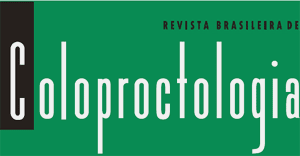The routine of the colonoscopic examination for therapeutic evaluation, for diagnosis, and management of the diseases of the colon and of the rectum, as well as for screening and prevention of the colorectal cancer in young patients bearing premalignant diseases or in those above 50 years of age, as well as for screening and prevention of the colorectal cancer in young patients bearing premalignant diseases or in those above 50 years of age, "has been one of the most successful public health projects worldwide71". The easy acceptance is due to three principal factors: first, to the technical adaptation and evolution of the instruments, and the safety of the examination; second one, to the practical development of the examiner skills, and, thirdly, to the magnificence of the image revealing broad access to the fine structures of the mucous membrane, with a large criteria for the diagnosis. In this context, the necessary preparation became the worst part or less tolerable of the colonoscopy. For this reason, it is necessary to look for a method of preparation, quick, efficient, cheap, pleasant, and safe. In the last 40 years, between the commentaries on mechanical and pharmacological methods - with different associations of laxative drugs - it was possible to find three products that, at least during some time, were world-wide references on large bowel cleaning for colonoscopy. They are: first, a 10% mannitol solution - it was dropped because of explosives accidents -; second, the polyethylene glycol (PEG) solutions, it was depreciated due to the requirement of large volumes for oral ingestion, due to electrolytic balance disturbance and rejection by the patient, and the third, the sodium phosphate (NaP) that would seem ideal, but that has received criticism because of its side effects, especially the nephrotoxicity. There is no the discussion on the efficiency of these three products, but on the safety with which we might promote their indiscriminate uses to offer the best conditions on performance of the colonoscopy. However, we have an impasse: the mannitol was abandoned, but it keeps on indicated among us, without causing problems, in a scheme that is different from which was used in the past when it influenced the accidents. On the other hand, the pharmaceutical industry did not manage to popularize PEG; the NaP is manufactured for rectal use, it substituted the predecessors with efficient cleaning, but with significantly harmful lesions. So, which remains for us is to rescue the mannitol - for that, we must evidence through a randomized trial that a oral ingestion of 10% mannitol solution, at least up to 4 hours before the colonoscopy, is totally harmless on diagnosis and therapeutic procedures.
Colonoscopy; polietileno glycol; mannitol; oral sodium phosphate; adverse effects; electrocoagulation; explosions; kidney failure
